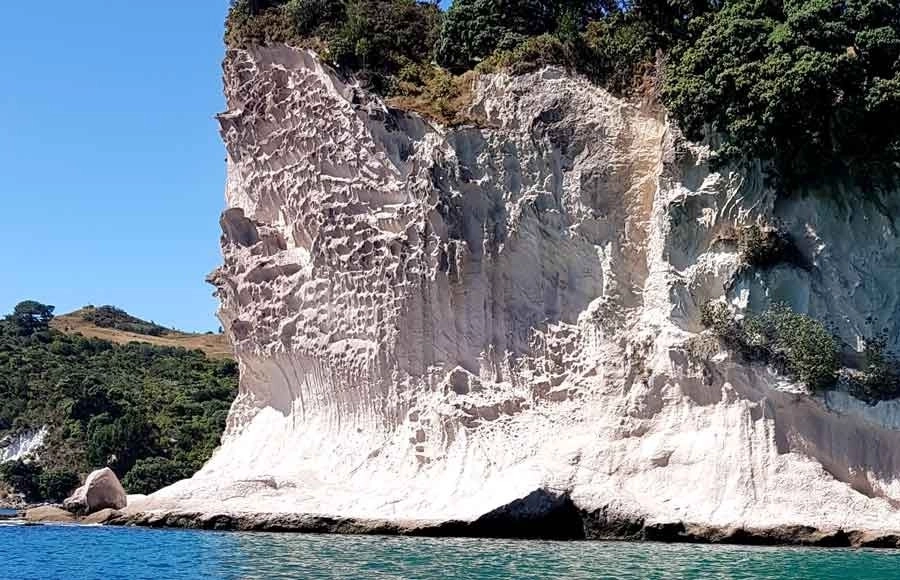- Stories
- History Articles
- Mercury Bay History Series – Coromandel Peninsula Geology
Mercury Bay History Series – Coromandel Peninsula Geology

Our Coromandel Peninsula is well known for its spectacular scenery and its past volcanic activity is largely responsible for much of this.
Help us get the word out!
If you like this article, please share it!
This connection is often not evident. The wind, rain and sea have taken their toll on what once must have been a dramatic and fiery landscape of distinctive volcanic cones, pumice, ash and lava. Coromandel Peninsula Geology is the theme of this third article in the series of History Snippets from the Mercury Bay Historical Society.
An Explosive Past
Eruptions started first near the northern tip of the Peninsula about 20 million years ago and spread southward. Today only the remnants of the backbone of volcanic cones remains. Associated with this volcanism are the gold bearing quartz reefs which have had a significant influence on the population, settlement and economy of the Peninsula.
Coromandel Peninsula only really began to take shape during the ice ages, which spanned the last 1 - 2 million years. Over this period large valley systems were carved out of the volcanic landscape at times of very low sea levels only to be drowned and largely infilled with mud and sand when our sea level reached its present height about 6500 years ago.

Geology types
Did you know that:
- The oldest sedimentary rock on the Peninsula is greywacke which from fossil evidence is between 140 and 150 million years old.
- Hahei's geological history began some 7 or 8 million years ago with a series of explosive volcanic eruptions which deposited a thick blanket of pumice and ash over the area.Cliffs,cave and formations
The older pumice and ash deposits are particularly well exposed in the cliffs around Cathedral cove. The Cathedral itself was formed by the linking of sea caves.
South of Hahei there are numerous caves and two blow holes the largest is 30 metres across and 40 metres high. A large Basaltic scoria cone similar to those of Auckland city but eight million years older once existed at the northern end of Opito Bay. Much of the cone has been removed by erosion through rises and falls in sea levels associated with the ice ages . Only a small portion now remains intact at Tokarahu point.
Mercury Bay Historical Society Inc
Members of the Mercury Bay Historical Society have compiled a series of online articles sharing key moments and themes of local history to be shared online. The Mercury Bay Historical Society provides its members with a regular newsletter including fascinating information about local history. New members are always welcome to the society – $25 for family membership and $15 for single.
Article Contributor
This article was provided by John Jackman, Chairman Mercury Bay Historical Society (2020).
Read More
Related Links
Mercury Bay Historical Society-
{{#owner}}
-
{{#url}}
{{#avatarSrc}}
{{name}} {{/url}} {{^url}} {{#avatar}} {{& avatar}} {{/avatar}} {{name}} {{/url}} - {{/owner}} {{#created}}
- {{created}} {{/created}}





